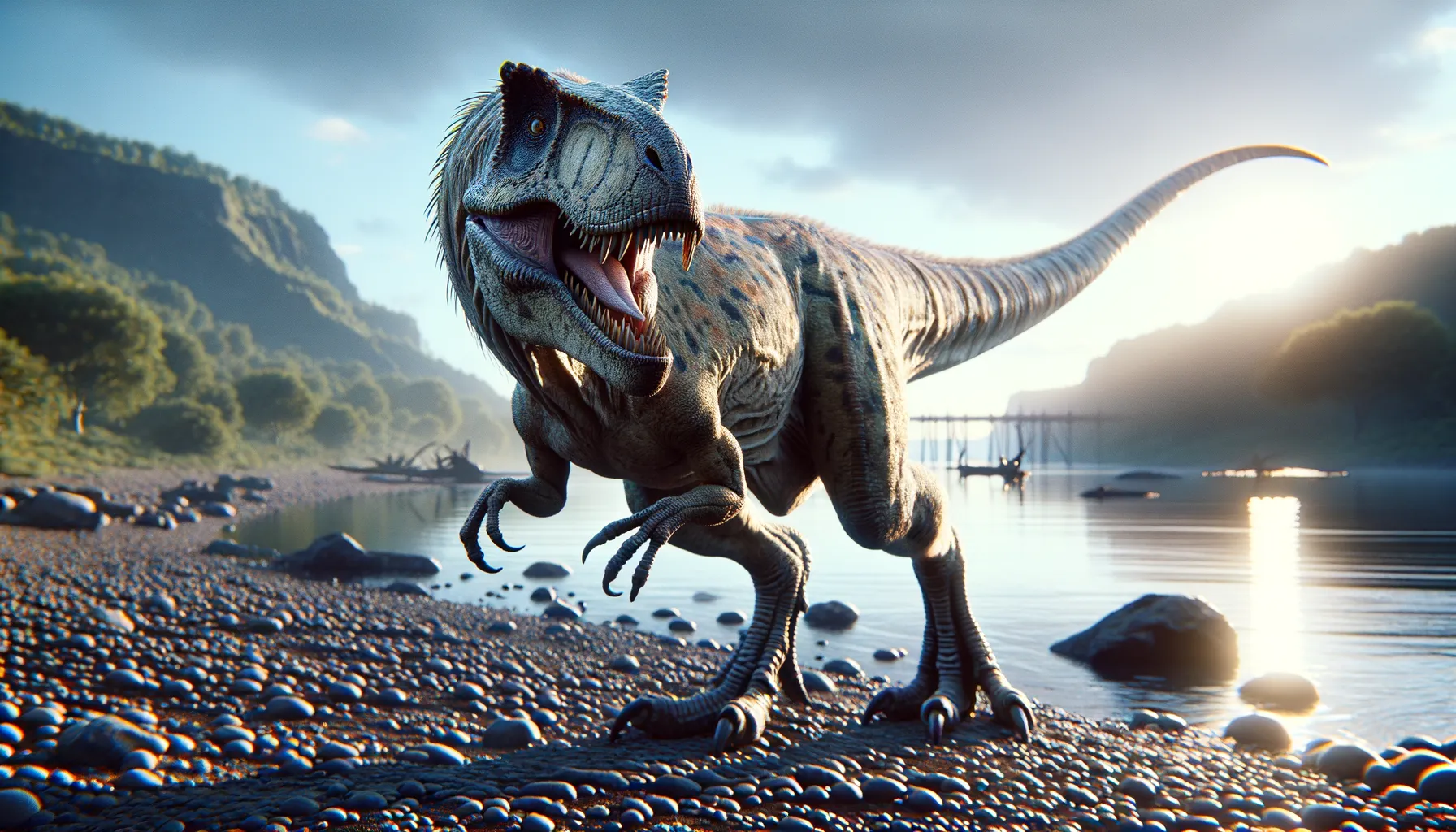
Utahraptor
The giant predator with sickle claws.
Period
Cretaceous
Length
Up to 7 meters long.
Height
Approximately 1.5 meters at the hip.
Weight
Around 500 to 1,000 kilograms.
Utahraptor was a large, fearsome dinosaur that roamed North America during the early Cretaceous period. It belongs to a group of theropods known as dromaeosaurids, often characterized by their sickle-shaped claws and birdlike characteristics. Utahraptor was significantly larger than its famous relative, Velociraptor, and its discovery has helped scientists understand more about the evolution of these predatory dinosaurs leading towards modern birds.
Diet
Utahraptor was carnivorous, primarily feeding on other large dinosaurs and possibly scavenging when necessary. Its sharp teeth and large claws made it an effective predator, able to take down prey much larger than itself.
Hunting
Utahraptor likely hunted in packs, using teamwork to chase or ambush prey, which would have been challenging given the size and strength of its potential victims. Its long claws were instrumental in delivering fatal blows or holding onto struggling prey.
Environmental challenges
During the Cretaceous period, the landscape was dynamic, and Utahraptor faced challenges such as competition for food sources from other predators and environmental changes affecting its habitat. Occasional climate shifts could have influenced prey availability and required adaptation for survival. The rugged terrain and diverse ecosystems meant having to adapt hunting strategies for different environments.
Speed
Likely agile with moderate speed for short bursts.
Lifespan
Estimated to live for around 20 to 25 years.
First discovery
Discovered in Utah, USA, in the early 1990s.
Fun Facts
- Utahraptor is one of the largest known species of raptors, reaching up to 23 feet long and 6 feet tall.
- It had a distinctive sickle-shaped claw on each foot, which was likely used for hunting prey.
- Discovered in 1991 in Utah, Utahraptor is actually named after the state where its fossils were found.
- Despite its size, Utahraptor is believed to have been a fast and agile predator, capable of quick turns and jumps.
- Utahraptor lived during the early Cretaceous period, more than 120 million years ago.
- This dinosaur is often compared to the Velociraptor from the 'Jurassic Park' movies, but Utahraptor was much bigger and more imposing.
- The discovery of Utahraptor helped paleontologists understand more about the evolution and adaptations of large theropod dinosaurs.
Growth and Development
Young Utahraptors likely experienced a rapid growth phase to compete with other predators and evade predation themselves. Fossil evidence suggests a series of growth spurts, indicating significant changes as they matured. These adaptations may have included developing longer claws and more agile limbs to better capture prey and defend against rivals.
Habitat
Utahraptor's habitat consisted predominantly of floodplain forests and semi-arid environments. This variety in ecosystems provided ample hunting grounds and shelter. Such environments were rich in flora and fauna, supporting both herbivorous dinosaurs and various smaller animals, which contributed to a complex food web.
Interaction with other species
Utahraptor would have been both predator and competitor within its ecosystem, occasionally facing off against other theropods for resources. Its interactions weren't limited to dinosaurs; smaller mammals and reptiles would likely have observed and avoided this formidable predator. The potential for symbiotic relationships with scavengers might have existed as well.
Natural lifespan
Utahraptor's natural lifespan could span up to two decades, based on current fossil evidence.
Reproduction
Utahraptor likely reproduced by laying eggs, possibly protecting nests to ensure offspring survival. Parental care could have been minimal after hatching, with young raptors quickly adapting to a life of hunting and evasion. Nesting strategies might have varied depending on environmental conditions and predator pressures.
Social behaviour
Evidence suggests that Utahraptor might have been social to some extent, potentially forming hunting packs to tackle larger prey. Such behavior would have required communication and cooperation among pack members. Solitary behavior could also occur, particularly during mating season or in resource-scarce environments.
Fossil locations
Utahraptor fossils have primarily been found in the Cedar Mountain Formation in Utah, USA. These discoveries offer significant insights into the species' size and predatory behaviors. Its fossils help paleontologists better understand the diversity and adaptation of dromaeosaurids during the Cretaceous period.
